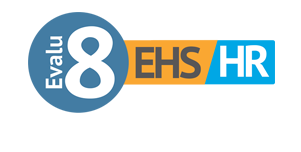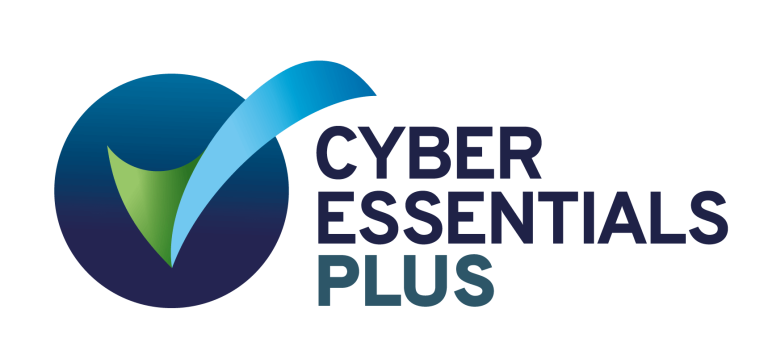
Choosing the right EHS software for accident and incident management is crucial for UK businesses aiming to reduce risk, ensure compliance, and streamline reporting. With regulators demanding faster investigations, clearer root-cause analysis, and robust corrective actions, an effective accident and incident system can make a significant difference.
But with so many options on the market, which software offers the best mix of real-time reporting, analytics, and ease of use in 2025?
In this guide, we evaluate the top 5 accident and incident software solutions for UK organisations in 2025, comparing their core reporting features, mobile capabilities, and suitability for different business sizes. Whether you need rapid mobile incident logging, automated investigation workflows, or advanced analytics dashboards, this list will help you decide.
Helpful summary
Overview: This article, brought to you by Evalu-8 EHS, reviews the top 5 platforms dedicated to accident and incident management in 2025. We evaluate each solution’s reporting workflows, analytics capabilities, mobile reporting tools, and pricing structures.
Why trust us: At Evalu-8 EHS, we focus on UK-centric safety software designed for precise incident tracking. Our team knows what it takes to capture, investigate, and resolve workplace accidents from initial report through to corrective action, and we only feature platforms that excel in these areas.
Why it matters: Fast, accurate incident reporting protects employees and preserves your organisation’s reputation. Regulators demand timely investigations and clear proof of corrective actions. The right accident and incident software shifts you from reactive compliance to proactive safety management.
Action points: Use this guide to determine which platform best fits your organisation’s size, industry, and reporting requirements. Whether you need a streamlined mobile reporting app or a full-featured system with in-depth analytics, this list will help you choose with confidence.
Evalu-8 EHS – Best for modular incident reporting
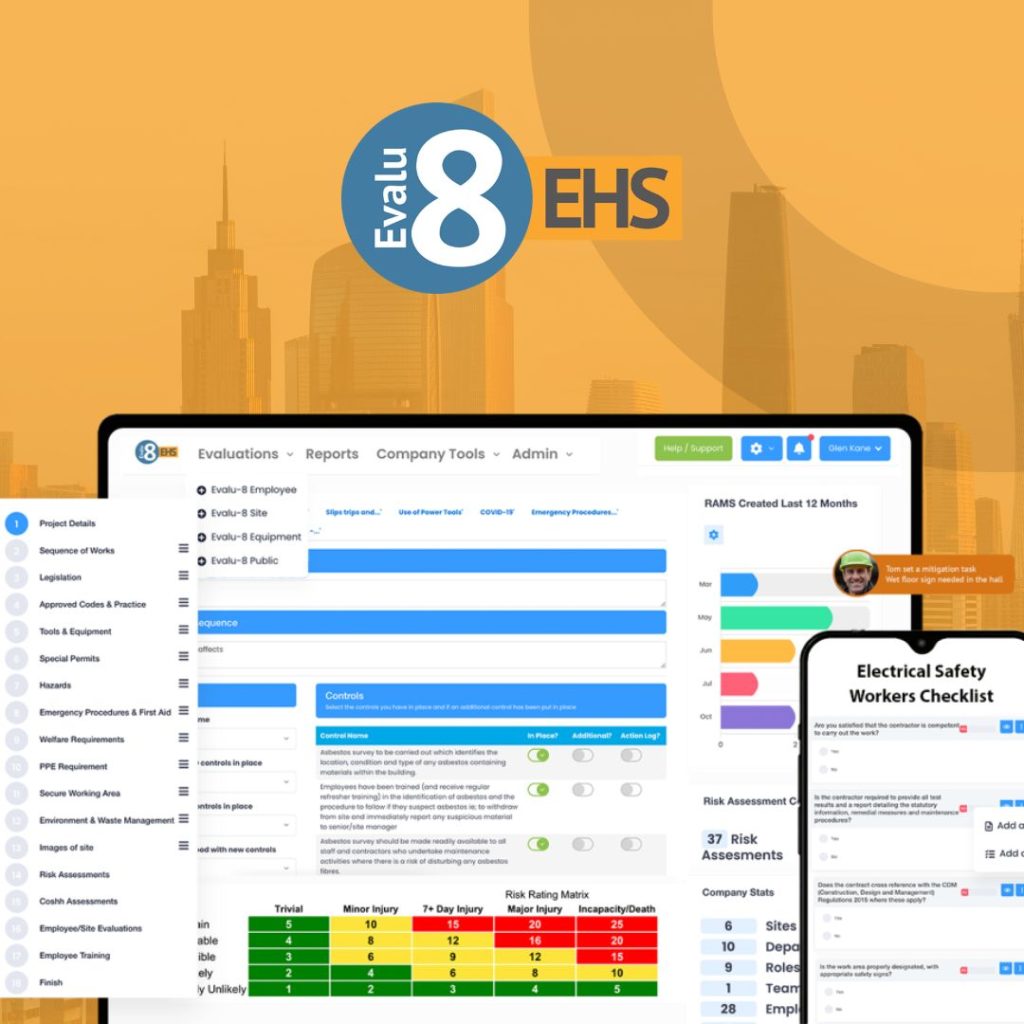
Why Evalu-8 EHS stands out
Evalu-8 EHS offers a modular, all-in-one solution built for UK organisations that require powerful accident and incident management. Its flexible design lets you activate only the incident reporting module, creating a streamlined, tailored fit for businesses of any size. Users can submit reports via desktop or mobile complete with photos and witness details, and configurable workflows automatically assign investigations and follow-up tasks. A centralised dashboard highlights incident trends, open actions, and time-to-closure metrics, enabling safety teams to spot recurring issues and take preventive action.
As Seen in
Core Features
Anywhere, Any Device Reporting: Empower users, whether staff or members of the general public to report accidents, near misses, and hazards in real time from any device (desktop, tablet, or mobile). Reports can even be submitted via QR-code links, ensuring no incident goes unreported.
Customisable Reporting Workflows: Build and tailor incident-reporting forms to capture exactly the data your organisation needs. You decide which fields are mandatory, which dropdowns appear, and which teams get automatically alerted.
- Internal Investigation Tracking: Once a report is raised, open an investigation directly within the platform. Log every step of your fact-finding process, record witness statements, document corrective actions taken, and track case status from “Open” through “Closed.”
File & Photo Attachments: Attach notes, photos, videos, and any supporting documentation (e.g., equipment inspection checklists, witness statements) directly to each incident or near-miss case. This ensures all evidence is stored in one place.
- Permission-Based Access Controls: Restrict visibility and editing rights so only authorised personnel can view or modify sensitive incident data. Administrators can grant granular permissions (view, edit, close, reopen) at a departmental or role level.
Advanced features
- Multi-site management: Group accident and incident data by location or department to compare performance metrics and identify trends across all sites
Automated notifications: Send email or mobile alerts when new incidents are reported or corrective actions become overdue, ensuring timely follow-up
COSHH integration: Link confirmed chemical exposure incidents directly to relevant COSHH records for faster risk assessment and streamlined incident investigations
Pricing
Evalu-8 EHS follows a modular, pay-as-you-grow model. Core platform access (required) starts at £2.50 per user per month. The Accident & Incident module can then be added for £95.00 per month as a flat fee.
Additional modules (e.g. RAMS, COSHH, audits) are available as needed. Pricing scales based on number of users. Request a demo for a custom quote.
Explore Evalu-8 EHS Accident & Incidents
Pros & cons
Pros:
Scalable modular approach allows pay-as-you-grow flexibility
Seamless integration between incident reporting and COSHH/RAMS modules
Real-time dashboards provide clear visibility across sites
Automated alerts enhance proactive safety management
Cons:
External SCORM modules required for eLearning content
Advanced reporting setup may require vendor support
Multiple modules increase overall cost for smaller teams
SafetyCulture
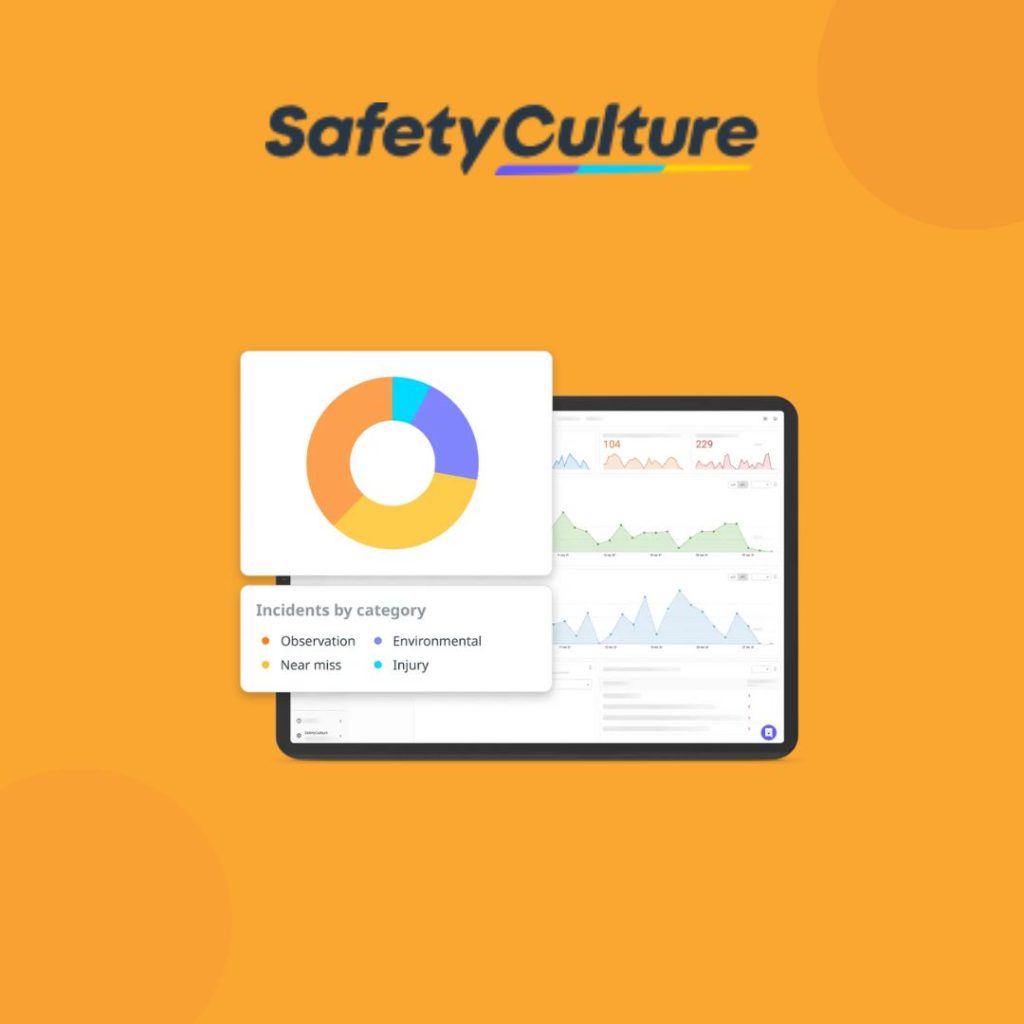
SafetyCulture is a mobile-first safety platform focused on rapid frontline incident reporting. Its intuitive app encourages staff to log accidents and near misses immediately, ensuring timely capture of critical details even in offline environments.
Core features
Mobile incident reporting: Log accidents or hazards via a user-friendly app; attach photos or voice notes for context
Customisable checklists: Build incident-specific forms to guarantee consistent data capture across all locations
Task assignment: Automatically assign investigation steps to designated safety coordinators with due dates
Offline capability: Record incidents in low-connectivity areas and sync automatically once reconnected
Basic analytics: View incident counts by type, location, or date in simple dashboards
Advanced features
Real-time alerts: Push notifications to supervisors when a high-risk incident is logged
Audit integration: Link incident data to inspection and audit modules for a unified safety approach
Role-based permissions: Restrict who can edit incident records or close investigations based on user role
Photo and video evidence: Capture visual proof of hazards or equipment failures directly within the app
Constraints and functionality gaps
Limited built-in corrective action tracking; additional configuration may be required
No direct COSHH linkage; chemical-related incidents must be correlated manually
Advanced analytics (trend heatmaps, root-cause graphs) require external BI tools
Pricing
Tiered subscriptions start at £19 per user per month for incident reporting and audit modules
Custom enterprise pricing available for larger organisations
Free trial offered to evaluate core mobile reporting features
Pros & cons
Pros:
Intuitive mobile app encourages immediate frontline reporting
Offline functionality ensures no data loss in remote or low-connectivity areas
Integration with inspection and audit modules provides a holistic safety platform
Real-time alerts keep supervisors informed of critical incidents
Cons:
Limited built-in root-cause analytics; requires extra tools for deeper insights
No direct COSHH integration; manual correlation needed for chemical incidents
Subscription costs can rise quickly for larger user groups
HandsHQ

HandsHQ delivers a straightforward, user-friendly incident management system tailored to small and medium-sized enterprises. Its simplicity and affordability make it ideal for organisations seeking quick deployment that need essential only incident-tracking capabilities.
Core features
Simple incident logging: Enter accident or near miss details in under a minute using pre-configured templates
Custom fields: Add or remove incident attributes (for example, “equipment involved” or “injury mechanism”) to fit your operation
Automated follow-ups: Assign corrective tasks automatically based on incident type and severity
Weekly summary emails: Receive an automated email listing all new incidents and open investigations each week
Basic analytics: View incident counts by category, location, or assignee in a straightforward bar chart
Advanced features
Role-based access: Restrict who can view or edit investigations by assigning roles (for example, “site supervisor” or “safety coordinator”)
CSV exports: Download incident data for further analysis in Excel or third-party BI tools
Constraints and functionality gaps
Limited advanced reporting; deeper trend analysis requires external exports
Incidents must be managed separately
No advanced dashboards for multi-site comparisons; focus remains on simple SME needs
Pricing
Subscriptions start at £10 per user per month
Volume discounts available for larger teams
Free trial available to test core incident management features
Pros & cons
Pros:
Highly affordable, making it accessible for smaller teams
Quick setup and minimal training required for day-one use
Automated summary emails keep management informed without platform login
Offline incident logging ensures continuity in low-connectivity areas
Cons:
Limited built-in analytics; deeper insights require external tools
No COSHH integration for chemical incidents
Not suitable for large enterprises requiring multi-site dashboards
EcoOnline
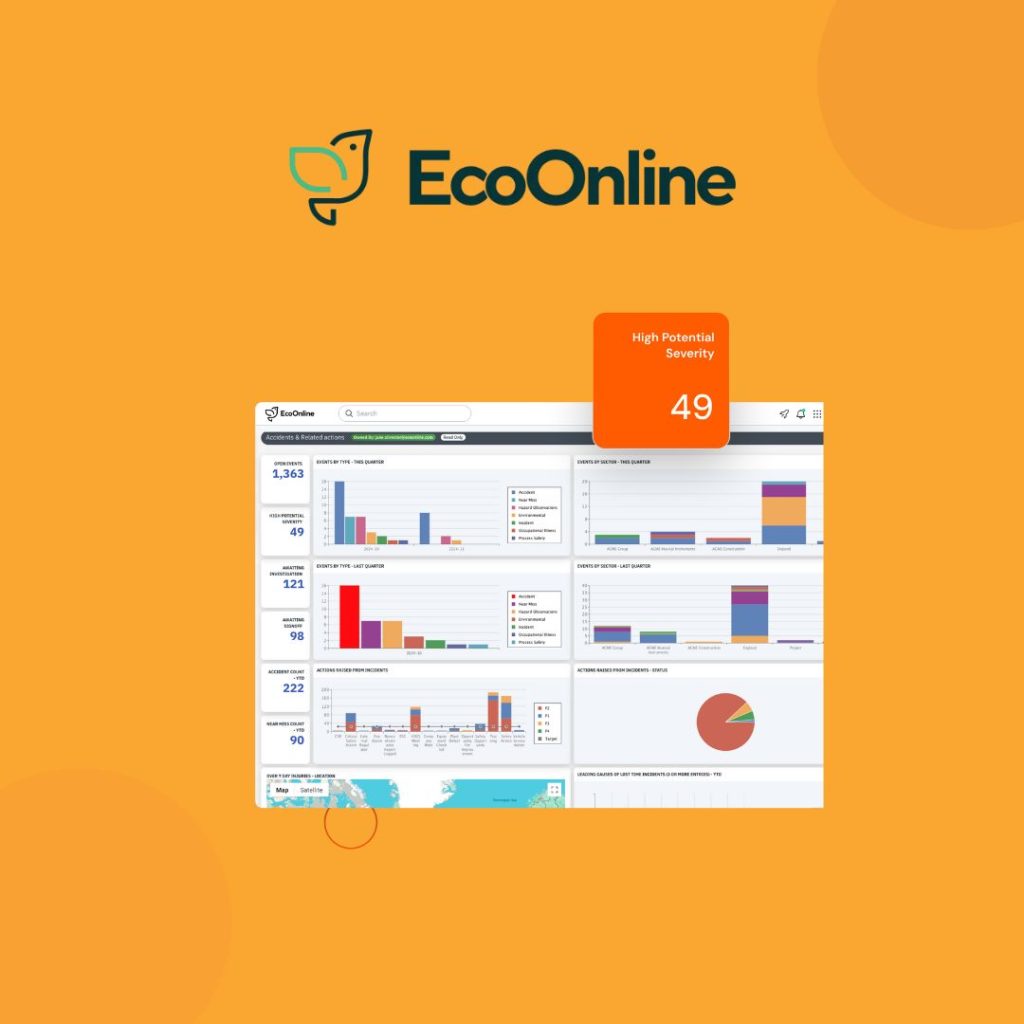
EcoOnline shines when managing incidents that involve hazardous substances. Its deep COSHH and SDS integration ensures that chemical-related accidents are documented with accurate exposure and control data.
Core features
Incident logging with chemical linkage: Automatically associate a reported accident with the relevant Safety Data Sheet and COSHH assessment
SDS repository: Access a built-in library of Safety Data Sheets to verify chemical hazards while logging incidents
Automated risk rating: Assign a risk score based on substance properties, exposure route, and severity for faster prioritisation
Audit integration: Link incident findings to audit checklists for recurring chemical safety gaps
Advanced dashboards: Monitor incident trends by chemical type, department, or control measure effectiveness
Advanced features
Permit-to-work integration: Tie incident data to permit records (for example, for confined space or hot-work permits) to identify permit breaches
Contractor monitoring: Track incidents reported by contractors separately and compare their safety performance to internal teams
Real-time alerts: Push notifications when a new high-risk chemical incident is logged, ensuring rapid management response
Constraints and functionality gaps
Complex onboarding and configuration due to extensive chemical modules
Limited built-in RAMS or method statement creation; requires external documentation tools
Less tailored to industries where chemical exposure is minimal; many features remain unused
Pricing
Bespoke quotes based on number of users, selected modules (COSHH, incident management, audits), and support level
Free demonstration available to explore chemical incident management capabilities
Pros & cons
Pros:
Comprehensive COSHH integration streamlines chemical-linked incident management
Built-in SDS library accelerates risk assessment during incident logging
Advanced dashboards highlight chemical incident trends and control gaps
Permit-to-work integration adds an extra compliance layer for high-risk tasks
Cons:
Lengthy onboarding and configuration due to module depth
No built-in RAMS or method statement builder
Less cost-effective for organisations without significant chemical-related incidents
RAMS App
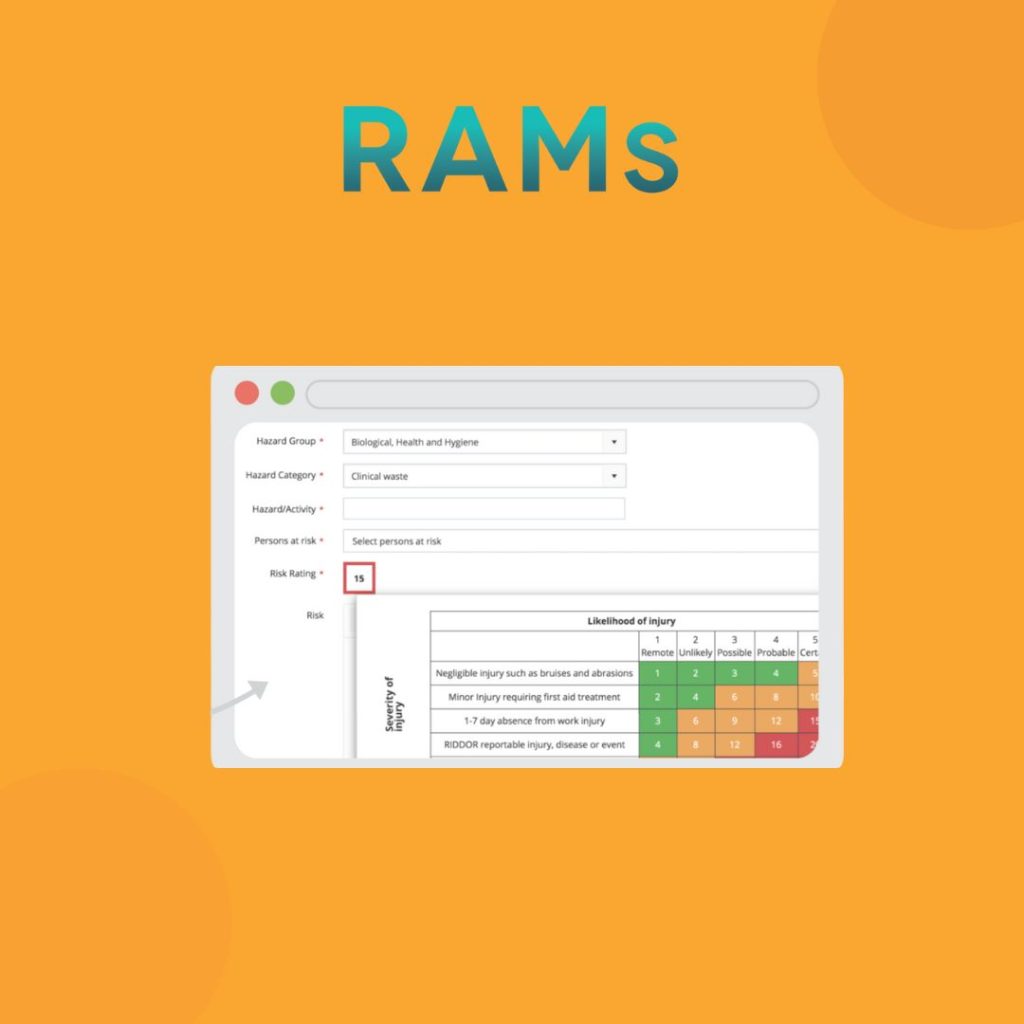
RAMS App focuses on connecting accident data to the underlying risk assessments and method statements. This linkage helps safety managers identify gaps in procedures that may have contributed to incidents.
Core features
Incident entry with RAMS reference: When logging an incident, select the related risk assessment or method statement that was in use at the time
Method statement templates: Access pre-written templates for common tasks (for example, working at height or handling hazardous materials)
Digital sign-off: Require site staff to acknowledge that they read both the RAMS and any related incident guidance before starting work
Photo documentation: Upload images of equipment failures or unsafe conditions directly into the incident record
Archive and retrieval: Store old incident reports and RAMS documents securely in the cloud for easy audit access
Advanced features
Trade-specific libraries: Use libraries tailored to your industry (for example, construction or manufacturing) to streamline RAMS creation
Recurring incident trend reports: Generate automated reports showing which RAMS are most frequently linked to incidents, guiding procedure revisions
Offline functionality: Log incidents and update RAMS in areas with limited connectivity; records sync once back online
SMS/email alerts: Notify safety leads when a new incident is logged against a critical RAMS
Constraints and functionality gaps
Limited native analytics beyond basic counts; deeper trend analysis requires exporting data
No comprehensive COSHH module for chemical-related incidents
Less robust mobile app compared to dedicated incident-reporting platforms; relies on responsive web interface
Pricing
*Subscriptions start at £399 per user per year
Multi-user and enterprise plans available for larger organisations
Free trial offered for hands-on evaluation
Pros & cons
Pros:
Direct linkage between incident data and RAMS pinpoints procedural gaps
Trade-specific RAMS libraries speed up method statement generation
Digital sign-off ensures staff acknowledge incident guidance before work starts
Offline functionality prevents data gaps in low-connectivity zones
Cons:
Limited native analytics; requires external tools for advanced trend analysis
No dedicated COSHH module for chemical incident management
Mobile experience relies on responsive web rather than a full native app
Choosing the Right Accident and Incident EHS Software
Selecting the best platform depends on your industry focus, team size, and specific safety challenges. Review each software to determine which Accident and Incident software fits your organisation’s needs.
FAQs
Accident and incident software is a digital tool that streamlines the process of reporting, investigating, and tracking workplace accidents or near misses. Using structured forms, photo attachments, geolocation, and automated workflows, it ensures timely capture of incident details. Adopting such software helps organisations meet regulatory requirements, identify root causes faster, assign corrective actions efficiently, and ultimately reduce repeat incidents.
Evalu-8 EHS offers a modular incident reporting module with real-time dashboards, COSHH integration, automated notifications, and fatigue risk alerts. Its scalable design means you can enable only the modules you need—incident logging, COSHH, RAMS, etc. and pay as you grow.
Yes. Modern platforms such as Evalu-8 EHS often offer modular designs that let you activate only the features you need. For example, you can choose a standalone Accident & Incident module for £95 per month, then add related modules such as COSHH, RAMS, or fatigue risk management later. Integration ensures that an injury linked to chemical exposure automatically references the relevant COSHH record, making risk assessments and follow-ups more accurate and efficient.
Most organisations see tangible benefits within 3–6 months of going live. Early wins include faster incident capture, clearer audit trails for investigations, and visibility of overdue corrective actions via real-time dashboards. As data accumulates, trend analysis highlights recurring hazards, enabling proactive risk reduction. Over time, streamlined workflows also reduce administrative overhead, freeing safety teams to focus on preventive measures.
